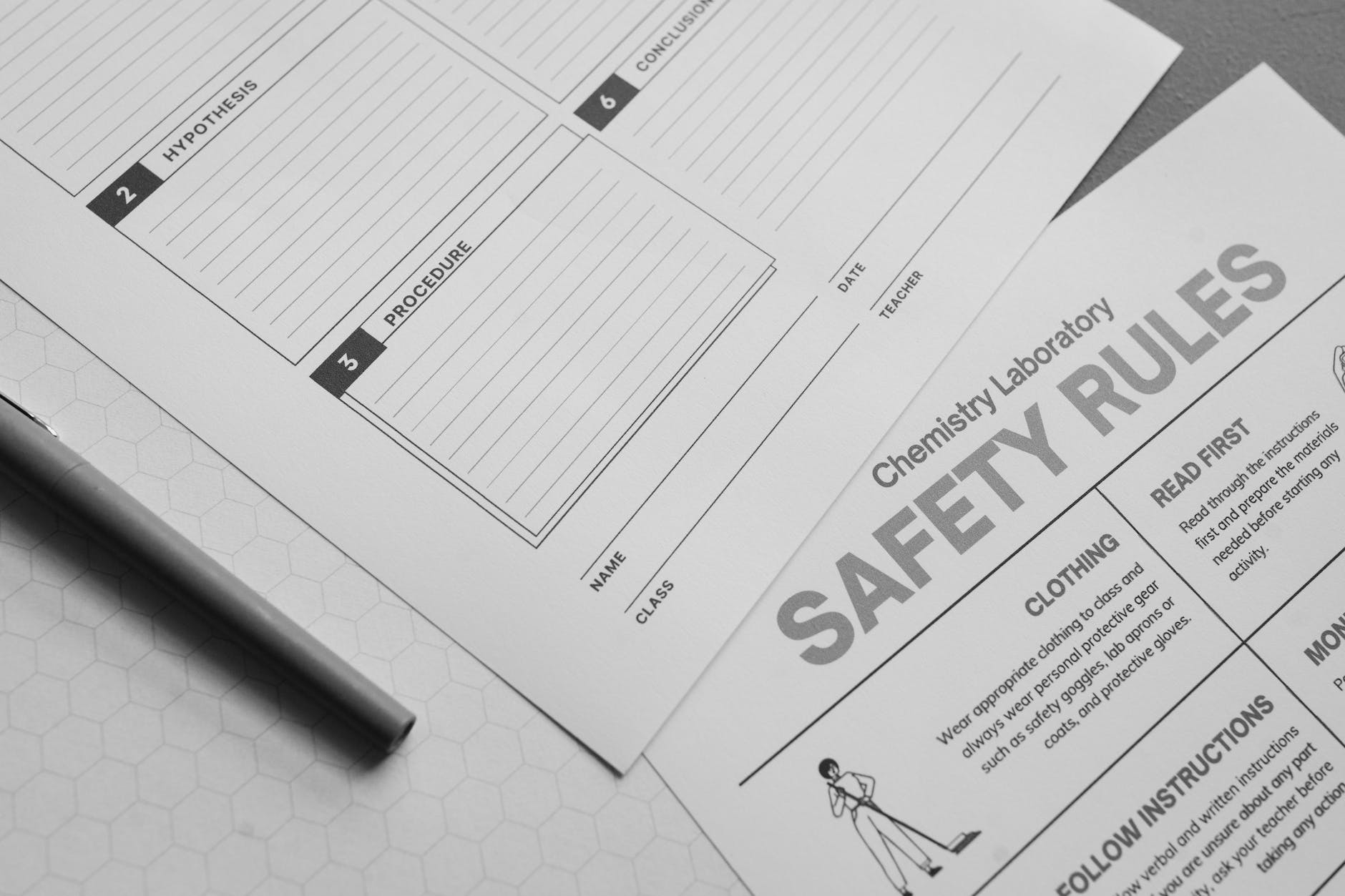
Occupational Health and Safety (OHS) Guidelines: Ensuring a Safe Workplace
Occupational Health and Safety (OHS) Guidelines : In today’s fast-paced world, ensuring the health and safety of employees in the workplace has become a paramount concern for organizations across the globe. Occupational Health and Safety (OHS) guidelines play a pivotal role in creating a secure working environment. In this comprehensive guide, we will delve into the world of OHS guidelines, understanding their significance, implementation, and benefits.
Introduction
Occupational Health and Safety (OHS) guidelines are the bedrock of workplace safety. They are a set of rules and regulations designed to protect employees from accidents, injuries, and health hazards while on the job. In this article, we will explore the world of OHS guidelines, from their historical roots to their modern-day importance and future trends.
Understanding Occupational Health and Safety (OHS)
What is OHS?
Occupational Health and Safety, commonly known as OHS, is a multidisciplinary field focused on safeguarding the health, safety, and well-being of employees in the workplace. It encompasses various aspects, including physical safety, mental health, and the prevention of occupational diseases.
Historical Perspective
The concept of workplace safety has evolved significantly over the years. OHS can be traced back to the Industrial Revolution when labor conditions were harsh and often perilous. The need for guidelines to protect workers became evident during this era.
Legal Framework
OHS guidelines are not just good practices; they are often mandated by law. Governments worldwide have established regulatory bodies to enforce OHS standards and ensure compliance. These laws vary by region but share a common goal: to create safe working environments for all.
The Importance of OHS Guidelines
Employee Well-being
The primary objective of OHS guidelines is to prioritize the health and safety of employees. When workers feel safe and protected, they are more likely to be engaged, motivated, and productive.
Legal Compliance
Adhering to OHS guidelines is not optional. Organizations that fail to comply with these regulations may face severe legal consequences, including fines and penalties.
Productivity Enhancement
Safe workplaces are more efficient and productive. Fewer accidents mean less downtime, reduced worker turnover, and improved overall performance.
Implementing OHS Guidelines
Risk Assessment
Identifying and mitigating workplace hazards is a fundamental aspect of OHS. Regular risk assessments help organizations proactively address potential issues.
Employee Training
Ensuring that employees are well-trained in safety protocols is essential. OHS guidelines should be communicated clearly, and training programs should be regularly updated.
Safety Equipment
Providing the necessary safety equipment, such as personal protective gear and emergency response tools, is crucial for OHS compliance.
Key Components of OHS Guidelines
Hazard Identification
Recognizing and assessing workplace hazards is the first step in creating a safe environment. This includes identifying physical, chemical, biological, ergonomic, and psychosocial hazards.
Incident Reporting
Employees should feel comfortable reporting accidents or near-miss incidents without fear of reprisal. Incident reporting systems promote transparency and continuous improvement.
Emergency Preparedness
Organizations must have plans in place to respond to emergencies effectively. This includes fire drills, evacuation procedures, and first-aid training.
Benefits of OHS Compliance
Reduced Workplace Accidents
Compliance with OHS guidelines significantly reduces the number of workplace accidents, leading to fewer injuries and lower insurance costs.
Improved Employee Morale
Employees who feel safe and valued are more likely to be satisfied with their jobs and remain loyal to their employers.
Enhanced Reputation
Organizations known for their commitment to OHS often enjoy a positive reputation, which can attract top talent and clients.
Measuring OHS Success
Metrics and KPIs
Key Performance Indicators (KPIs) and metrics help organizations track their OHS performance and identify areas for improvement.
Continuous Improvement
OHS is an ongoing process. Regular assessments and feedback loops are essential for continuously enhancing workplace safety.
Challenges in OHS Implementation
Resistance to Change
Introducing OHS guidelines may face resistance from employees and management. Effective change management strategies are crucial.
Resource Allocation
Investing in OHS requires financial and human resources. Balancing safety with other business priorities can be challenging.
Keeping Up with Regulations
OHS regulations can change frequently. Staying up-to-date and compliant can be a daunting task for organizations.
Global OHS Best Practices
Case Studies
Exploring successful OHS implementations across different industries can provide valuable insights for organizations.
Cross-Industry Insights
Many OHS practices are transferrable between industries. Learning from other sectors can lead to innovative solutions.
Future Trends in OHS
Technology Integration
The integration of technology, such as IoT sensors and AI, is revolutionizing OHS by enabling real-time monitoring and predictive analytics.
Mental Health Focus
OHS is increasingly recognizing the importance of mental health in the workplace, with initiatives aimed at reducing stress and improving well-being.
Sustainability
Sustainable workplaces not only benefit the environment but also contribute to employee health and safety.
Employee Engagement in OHS
Empowering the Workforce
Empowering employees to actively participate in OHS initiatives fosters a culture of safety and responsibility.
Training and Communication
Regular training and open communication channels ensure that employees are well-informed about OHS practices and policies.
Small Business and OHS
Tailoring Guidelines
Small businesses can adapt OHS guidelines to their scale and budget, ensuring compliance without excessive costs.
Cost-Effective Solutions
Implementing OHS need not be prohibitively expensive. Many cost-effective solutions are available to small businesses.
OHS and COVID-19
Adapting to a Pandemic
The COVID-19 pandemic posed unprecedented challenges for workplace safety. Adapting OHS practices became crucial in preventing the spread of the virus.
Lessons Learned
The pandemic highlighted the importance of adaptability and resilience in OHS planning.
Legal Consequences of Non-Compliance
Fines and Penalties
Organizations that neglect OHS compliance can face fines, penalties, and legal action that can have long-lasting financial consequences.
Reputation Damage
Non-compliance can tarnish an organization’s reputation, affecting its ability to attract clients and talent.
Conclusion
Occupational Health and Safety (OHS) guidelines are not just a legal requirement; they are a fundamental aspect of creating a safe and productive workplace. By prioritizing the well-being of employees, organizations can reap the benefits of reduced accidents, improved morale, and a positive reputation.
FAQs
What is the main goal of OHS guidelines?
The primary goal of OHS guidelines is to ensure the health and safety of employees in the workplace by identifying and mitigating hazards and promoting compliance with legal standards.
How can small businesses implement OHS guidelines?
Small businesses can tailor OHS guidelines to their specific needs and budget, focusing on cost-effective solutions and employee training.
Are there any technological advancements in OHS?
Yes, technology is playing an increasingly significant role in OHS, with innovations like IoT sensors and AI enabling real-time monitoring and predictive analytics.
What role does employee engagement play in OHS?
Employee engagement is crucial in fostering a culture of safety and responsibility. Engaged employees are more likely to actively participate in OHS initiatives.
How can organizations prepare for future OHS challenges?
Organizations should stay informed about evolving OHS regulations and trends, invest in technology, and promote a culture of adaptability and resilience to meet future challenges head-on.
In this ever-evolving landscape of workplace safety, Occupational Health and Safety (OHS) guidelines continue to play a pivotal role in protecting employees and ensuring that organizations thrive in a secure environment. As we move forward, the integration of technology, a focus on mental health, and sustainable practices will further enhance OHS efforts, creating safer and healthier workplaces for everyone involved.

























Good evening sir,
HIRA kya hai?
Uska steps kitne hote ?
How to do HIRA?
Koi pdf dijiye na uske bare me plzz..
Hope, this will help you!
https://www.hsestudyguide.com/what-is-hira/
https://www.hsestudyguide.com/how-to-prepare-hira/
https://www.hsestudyguide.com/how-to-make-hira-on-work-at-height/